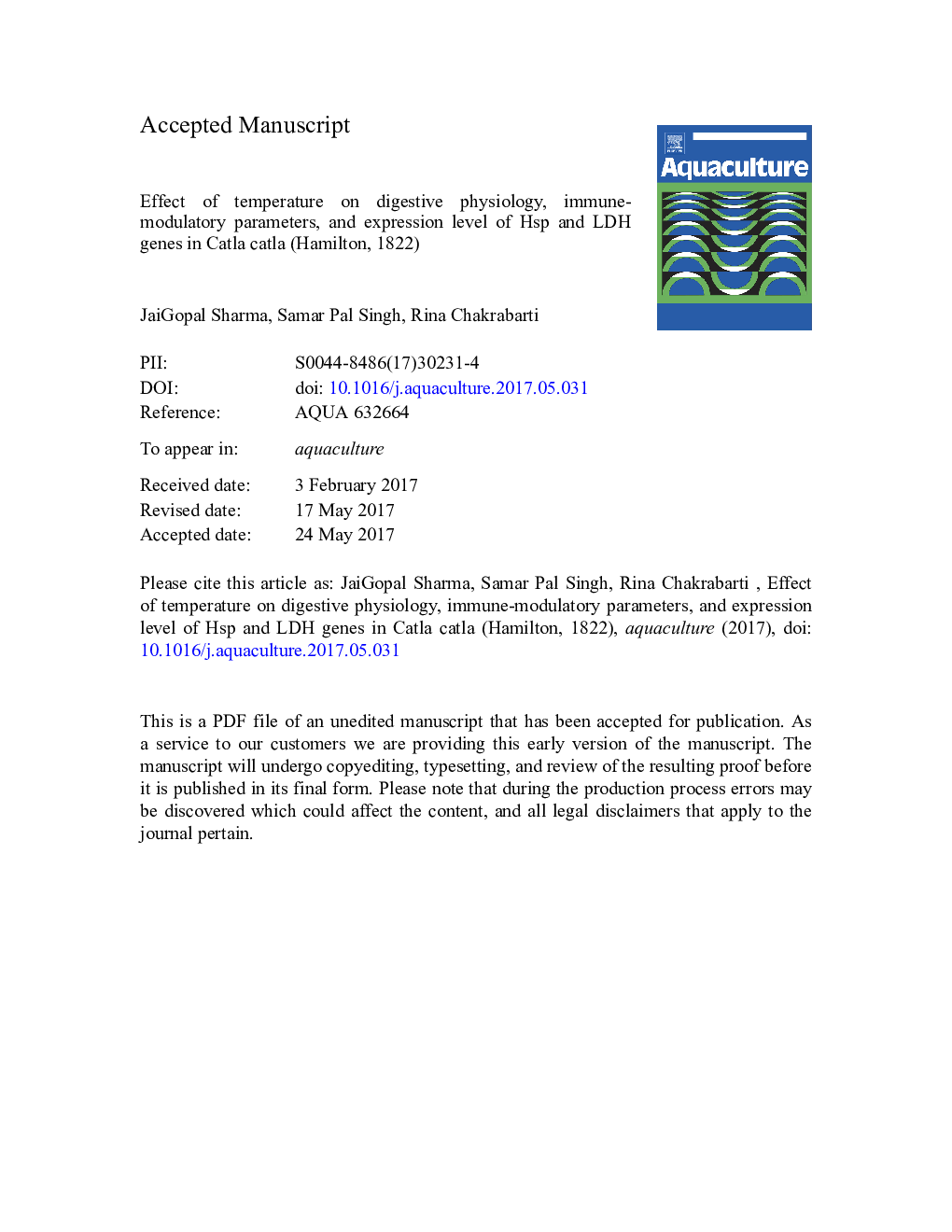| Article ID | Journal | Published Year | Pages | File Type |
|---|---|---|---|---|
| 5539254 | Aquaculture | 2017 | 44 Pages |
Abstract
Fish face the challenge of diurnal and seasonal fluctuations of temperature in culture and it is essential to understand their physiological responses to thermal stress. Indian major carp Catla catla, catla (7.52 ± 0.22 g) were acclimated at 28 ± 1 °C for 21 days and then exposed at six different temperatures: 10, 15, 20, 25, 28 and 35 °C. Blood and tissue samples were collected after 12 h and 7 days of reaching the assigned temperature. Significantly (p < 0.05) higher mortality of fish was recorded at 10 °C. Exposure of catla below 25 °C affected food consumption and digestive enzyme activities. It caused immunosupression as significantly (p < 0.05) lower serum lysozyme, myeloperoxidase and nitric oxide synthase levels were found in fish. Significantly (p < 0.05) higher thiobarbituric acid reactive substances indicated higher lipid peroxidation in catla exposed at 10-15 °C compared to other treatments. The expression of heat shock protein (Hsp) genes Hsp60, Hsp70 and Hsp90 and lactate dehydrogenase, LDH-A was evaluated in hepatopancreas and muscles. Hsp60 was sensitive towards lowering of temperature, whereas Hsp70 was responsive at highest temperature in both tissues. This study highlighted the impacts of cold environmental conditions on the physiology of this species.
Related Topics
Life Sciences
Agricultural and Biological Sciences
Aquatic Science
Authors
JaiGopal Sharma, Samar Pal Singh, Rina Chakrabarti,
